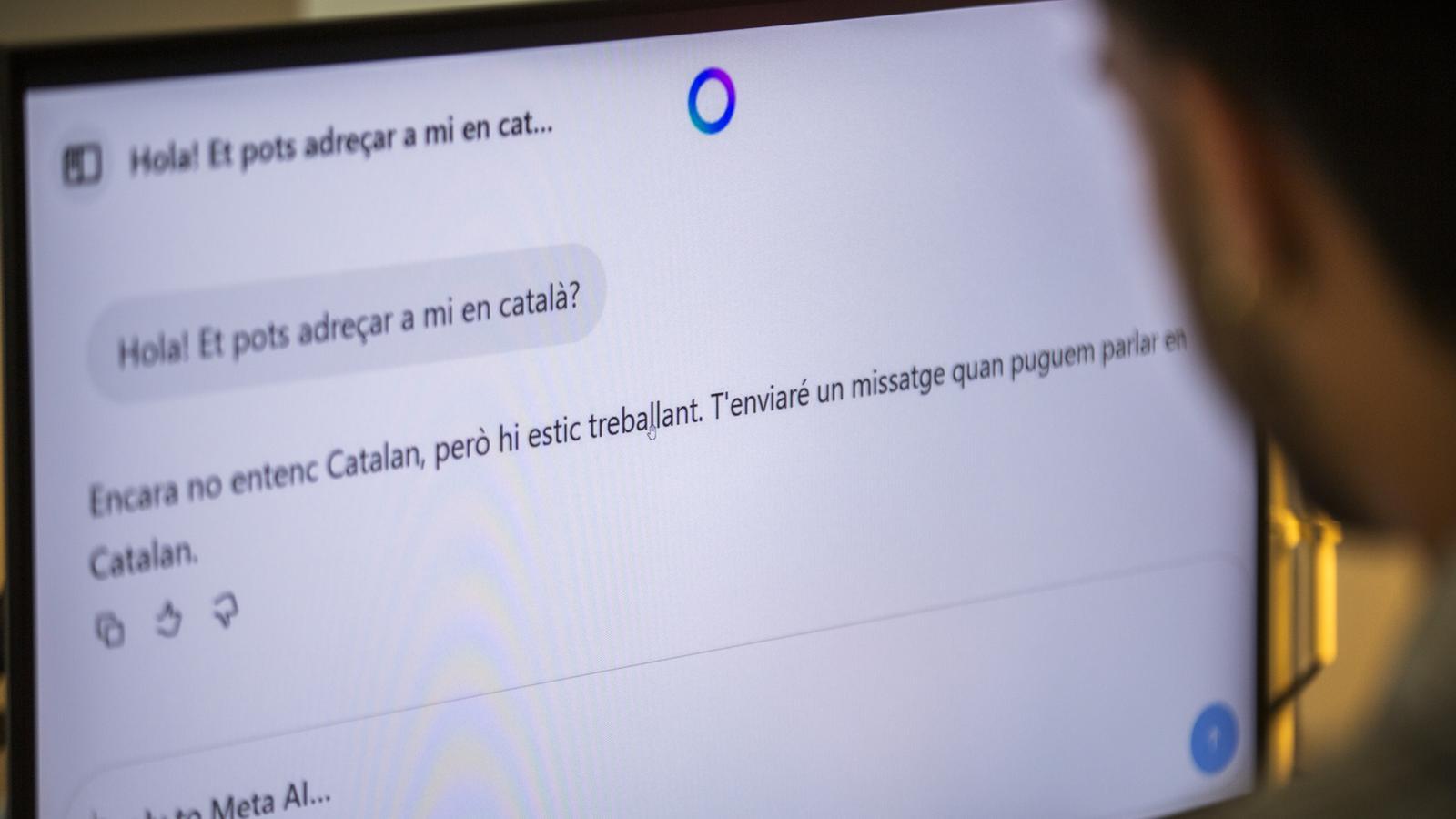WhatsApp AI refuses to respond in Catalan (despite knowing it)
An overview of language support in the main artificial intelligence chatbots


BarcelonaThe recent addition of Meta AI to WhatsApp, with which Meta Platforms aims to have the 3 billion users of the world's most popular mobile chat platform participate for free in the training of its artificial intelligence (AI) models, has revealed a curious paradox: the aforementioned AI knows Catalan. When users start a conversation in our language, the chatbot initially responds in Catalan for a few tenths of a second, but then deletes the response—usually correct enough—and goes on to claim that it doesn't yet understand the language and indicates that, when it speaks it, it will let us know.
This situation, documented by numerous Catalan-speaking users, reveals a contradiction between the actual technical capabilities of AI models and the official language policies of technology companies. Catalan, with more than 10 million speakers, is not among the thirteen languages that Meta AI formally considers, a list that includes languages with over 70 million speakers, such as Thai.
The explanation for this behavior seems to lie in the specific variant of Meta AI deployed in Europe. Tests carried out by Accent Obert from different European states—Poland, Romania, and the Netherlands—confirm the same pattern of instant autocorrection, while in the United States it operates without these linguistic restrictions. This phenomenon does not only affect Catalan: Basque, Galician, and even Greek, a language with a state behind it, show the same behavior. On the other hand, Asturian and Aragonese do not generate this reaction.
It should be noted that Meta Platforms, as a private company, has every right to include the languages it deems appropriate. That said, readers who insist on conversing in Catalan with a chatbot within WhatsApp have it easy: they can ignore Meta AI and add ChatGPT (+1-800-242-8478) or Microsoft Copilot (+1 877-224-1042) as contacts on their phone, thus avoiding the limitations formally in Catalan.
The current landscape of AI chatbots with Catalan
The issue with Meta AI, which in addition to WhatsApp can also be experienced on the chatbot's website and in the Instagram app, has led me to review the presence of Catalan in the main commercial chatbots on the market. I have tested eleven: ChatGPT (Open AI), Claude (Anthropic), Copiloto (Microsoft), DeepSeek, Gemini (Google), Grok (xAI), LeChat (Mistral AI), Lumo (Proton), Perplexity, Meta AI, and Qwen (Alibaba).
In addition to the possibility of communicating in Catalan in writing, I have also tried communicating by voice and have looked for differences between the free and paid versions. The results—which reflect behavior at the end of July and use from devices configured with Catalan as the preferred language—show an uneven scenario, with notable differences between the official explicit recognition of Catalan and the implicit practical skills in our language, which have been acquired through cross-training. I have not rated the performance or quality of the content, only the ability to interact with it in Catalan. Except for Meta AIAll the chatbots tested accept conversations in Catalan, although some spontaneously switch to another language.
ChatGPT It offers the most robust Catalan support. OpenAI's platform explicitly recognizes Catalan for both text and speech, to the point where it appears among the list of more than 40 built-in languages, both in the free and paid versions.
Microsoft Copilot Catalan was formally incorporated in September 2024 as part of a general expansion. Support applies to the entire Microsoft 365 office ecosystem, including voice features. However, Microsoft cautions that the rollout is still in its maturation phase and that it may not understand all Catalan colloquial expressions.
Google Gemini This is a peculiar case of partial explicit support. While Catalan is officially listed for interactions in the sidebar of Gmail, Docs, Sheets, and Drive, and also for generating images, the core writing assistance features don't. Voice capabilities show a similar divide: while Google's search engine has supported Catalan since 2013, the Gemini 2.5 models still don't include it among the 24 languages on the official list.
Claude de Anthropic It's moving into ambiguous territory. The company claims the chatbot processes requests and generates responses in most languages that use Unicode characters, like ours, but doesn't provide specific lists. Voice features are limited to English, though multilingual support is listed on Anthropic's public roadmap.
Along similar lines, we have DeepSeek, Grok (the xAI chatbot with which you can communicate within the X application and soon also within Telegram) and the incipient LumoAll three operate with only implicit support, without publishing complete lists of supported languages despite promoting their multilingual capabilities. Overall, this lack of transparency creates uncertainty about the quality and continuity of the Catalan service.
Perplexity AI It depends on the underlying GPT-4 and Claude models. It also doesn't formally support Catalan, which is a shame because it was one of the first chatbots to explicitly state the sources of information in its responses, although others have since followed suit. It has the largest potential audience here, because all Movistar subscribers get a free year of Perplexity's Pro version, which includes voice features... but not in Catalan.
Among the less popular alternatives are Alibaba's Qwen, which stands out as the only platform that explicitly mentions Catalan in its documentation. Current Qwen3 models declare support for over 100 languages, including Catalan. However, the application interface is not in our language.
Instead, The Mistral AI Chat -the main European alternative-, apart from being one of the poorest in content, does not include Catalan in the official lists of supported languages, despite being a French company. The Mistral Large 2 models mention "dozens of languages," but only specify the majority languages.
Voice chat: only two options
Verbal dialogue presents a very limited panorama. Only ChatGPT and Microsoft Copilot offer full official voice capabilities for Catalan, both in speech recognition for queries and voice synthesis for responses. Google maintains historical recognition, but still does not include Catalan in its most recent models.
Conclusions for Catalan speakers
In the current AI chatbot ecosystem, the most robust and comprehensive options for Catalan are ChatGPT and Copilot. The latter stands out especially for the naturalness of its spoken responses and is also the most logical choice for business environments based on Office 365. Excellent, with explicit Catalan support and free access, ideal for developers and custom applications.
To do?
Naturally, we Catalan speakers aspire to be able to communicate fully with all AIs in our own language. The trend points toward increasing recognition, but the pace of adoption varies significantly between companies. Demand from Catalan-speaking users can accelerate this process: whether you use ChatGPT, Copilot, or Qwen, but especially any of the other eight chatbots, access them with computers and phones configured with Catalan as the preferred language and insist on communicating in Catalan even if the interface is in another language. Only in this way will they take us into account.
